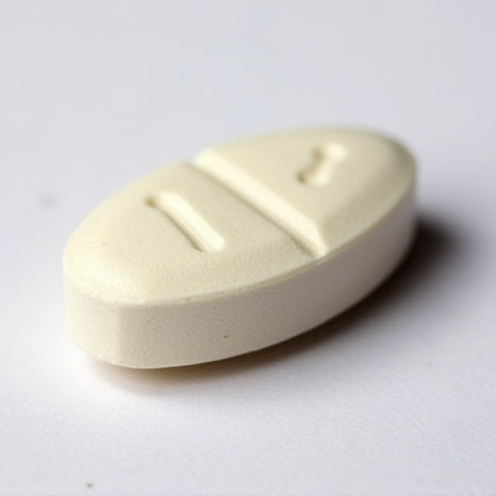Valsazem 160 Tablet
Product Info
| Prescription required | Yes |
| Marketer | Zeelab Pharmacy Pvt Ltd |
| Active Ingredient | Valsartan (160mg) |
| Storage | Store below 30°C |
| Chemical Class | Tetrazole derivative |
| Habit Forming | No |
| Therapeutic Class | CARDIAC |
| Action Class | Angiotensin receptor blockers(ARB) |
| User Rating | 4.7 |
| User Reviews | 719 |
FAQ




















Valsazem 160 Tablet Reviews
Valsazem 160 can be prescribed either alone or in combination with other medicines. It may be taken with or without food during the day or at night. However, try to take it at the same time each day to get the most benefit. It is important to continue taking it regularly even if you feel well or if your blood pressure is controlled. Most people with high blood pressure do not feel ill, but if you stop taking this medicine, your condition could get worse. This is a widely used medicine and is considered safe for long-term use.
Making some changes in your lifestyle will also help lower your blood pressure. These may include regular exercise, losing weight, smoking cessation, reducing alcohol intake, and reducing the amount of salt in your diet as advised by your doctor. This medicine is tolerated well by most patients and has few side effects. Dizziness, particularly after the first dose, is known to occur in some people. This may be associated with low blood pressure, orthostatic hypotension, and rash. Let your doctor know if these side effects bother you or do not go away. No weight gain has been seen with the regular use of this medicine.
Before taking this medicine, let your doctor know if you have any kidney or liver problems. Pregnant or breastfeeding mothers should also consult their doctor before taking it. Your doctor may check your kidney function, blood pressure and potassium levels in your blood at regular intervals while you are taking this medicine.
How Valsazem 160 Tablet Works
How to Use Valsazem 160 Tablet
Benefits of Valsazem 160 Tablet
- In Prevention of heart attack and stroke: Valsazem 160 lowers your blood pressure and makes it easier for your heart to pump blood around your body. If your blood pressure is controlled you are less at risk of having a heart attack or stroke. Keep taking this medicine regularly.
- In Hypertension (high blood pressure): Valsazem 160 lowers blood pressure by relaxing blood vessels and making it easier for your heart to pump blood around your body. It must be taken regularly as prescribed to be effective. You do not usually feel any direct benefit from taking this medicine, but it works in the long term to keep you well.
- In Heart failure: Heart failure means your heart is weak and cannot pump enough blood to your lungs and the rest of your body. The most common symptoms are breathlessness, tiredness, and swelling in your legs, ankles, abdomen, and other parts of your body. Valsazem 160 lowers your blood pressure which makes it easier for your heart to pump blood around your body and is, therefore, effective treatment for heart failure.This medicine will help relieve your symptoms, making you feel better and more energetic. You should make appropriate lifestyle changes (such as eating healthily and keeping active) to help this medicine be effective. Take it regularly and keep taking it even if you feel better.
Uses of Valsazem 160 Tablet
- Prevention of heart attack and stroke
- Hypertension (high blood pressure)
- Heart failure
Valsazem 160 Tablet Side Effects

Safety Tips
Quick Tips
- Do not stop taking it suddenly without talking to your doctor.
- It can make you feel dizzy for the first few days. Rise slowly if you have been sitting or lying down for a long time.
- Avoid taking anti-inflammatory medicines such as ibuprofen along with this medicine without consulting your doctor.
- Your doctor may get regular tests done to monitor the level of urea, creatinine, and potassium in your blood.
- Do not take Valsazem 160 if you are pregnant or breastfeeding.
References
- Valsartan [Product Information Sheet]. Solan, Himachal Pradesh: Torrent Pharmaceuticals Ltd. 2022.
- Valsartan. East Hanover, New Jersey: Novartis Pharmaceuticals Corp.; 1996 [revised Feb. 2011].
- Briggs GG, Freeman RK, editors. A Reference Guide to Fetal and Neonatal Risk: Drugs in Pregnancy and Lactation. 10th ed. Philadelphia, PA: Wolters Kluwer Health; 2015. pp. 1457-58.
- Benowitz NL. Antihypertensive Agents. In: Katzung BG, Masters SB, Trevor AJ, editors. Basic and Clinical Pharmacology. 11th ed. New Delhi, India: Tata McGraw Hill Education Private Limited; 2009. p. 183.
- Central Drugs Standard Control Organisation (CDSCO).
- Pfeffer MA, Opie LH. Inhibitors of the Renin-Angiotensin-Aldosterone System. In: Opie LH, Gersh BJ, editors. Drugs for the Heart. 8th ed. Philadelphia, Pennsylvania: Elsevier Saunders; 2013. pp. 157-58.
- Hilal-Dandan R. Renin and Angiotensin. In: Brunton LL, Chabner BA, Knollmann BC, editors. Goodman & Gilman’s: The Pharmacological Basis of Therapeutics. 12th ed. New York, New York: McGraw-Hill Medical; 2011. pp. 736-39
- Drugs and Lactation Database (LactMed) [Internet]. Bethesda (MD): National Library of Medicine (US); 2006. Valsartan. [Updated 2020 Jan 20].
